Game Design Spotlight #17: Playing Mind Games With Wall Portals In Splitgate Makes PvP Matches Feel Fresh
The freeform player mechanic keeps matches feeling not-so-repetitive hours into playing.
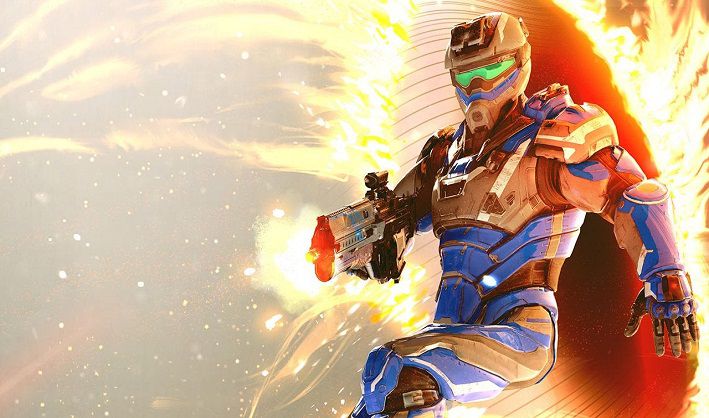
Welcome to the 17th installment of the Game Design Spotlight! This column is your weekly dose of my analysis of game design elements across many multiplayer titles, such as the Picture Style feature in Swords of Legends Online and how real-life oddities combined to make quite the intriguing setting in The Secret World.
Last week, I went back to Lost Ark to discuss its cinematic cutscenes that can reveal more of the zone map while keeping everything cohesive. Today, I will discuss the player-controlled wall portals in Splitgate and how they make for the perfect mechanic to play mind games with opponents and keep its chaotic PvP matches fresh after hours of playtime.
On the surface, Splitgate is a mixture of Halo and Portal with an arcade gallery of modes/maps. You will pop into a sprawling zone of corridors or wide-open spaces to virtually shoot another guy in the face. Yeah, I know, not all that original. But listen, with the wall portals thrown in the mix, Splitgate redefines what it means to win a gunfight and turns this genre of FPS PvP games on its head.
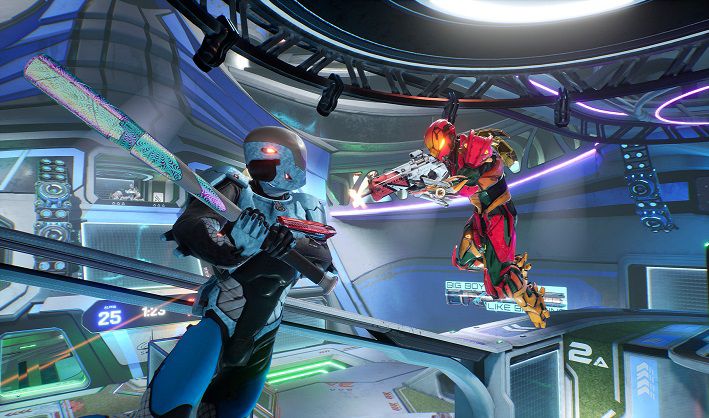
Running circles around someone or nailing them in the back of the head through a wall portal you created is where the game shines best. It’s a case of trial and error in the beginning hours, but when you manage to one-up a guy tailing your six with a cleverly-placed portal, several rounds of matches will naturally spin the gears in your head. You will feel inspired to use wall portals in new ways and learn to be adaptable based on enemy movement.
All players have total freedom on when/how they would like to use their portals to outsmart or sneak behind opponents. Each match feels fundamentally different because of that fact. By the same token, the rotating online players you face with different mannerisms and weapons add to the refreshing feeling because you will need to adjust your game plan for portals. With all this in mind, the core loop of strategy and portal-slinging chaos makes Splitgate an engrossing match-based game that you can play for hours without getting bored after a few queues.
Complicated/Easy
In fact, you will be engaged most of the time in your early hours while trying to wrap your head around portals. While they are simple to fling onto a wall and another elsewhere to jump between locations, you will have a tough time gauging their viability in a heated firefight. Making matters a bit more complicated is that you can only make two portals on certain types of walls, restricting player flexibility somewhat.
Those aspects sound negative, but I see them as huge positives in my book. For something so simple to use, a measure of complexity should be a welcome element to such a game-changing player verb. This way, the masters of portal manipulation will triumph over the gun-slingers that are better at aiming, and the playing field is even because everyone has the same powers.
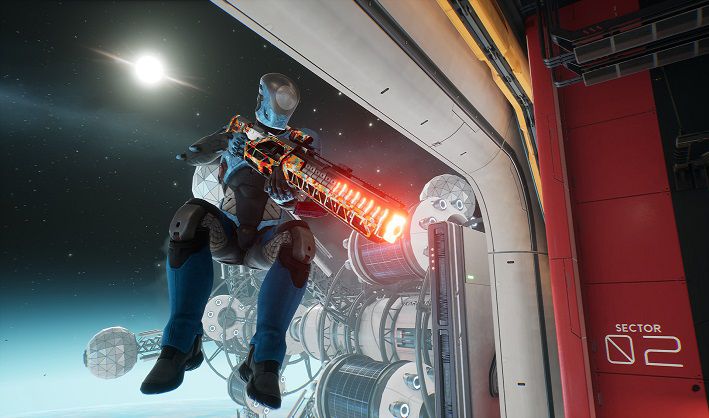
In its middling status of intricacy and straightforwardness, portals thrive as a fun source for players to experiment and make impossible plays. That means unconsciously casting out portals - one on the ceiling and another around the corner - and catching a glint of red armor passing by, prompting you to escape into your nearest hole to counterattack the enemy player where they least expect it.
The scenario may never happen again on the same map or even in your tenth match during your play session. What is fantastic about that reality is that players should do whatever suits their fancy. It's a satisfying loop of cat-and-mouse that keeps players invested to clock in more playtime.
Outplayed
With the way developer 1047 Games designed portals in conjunction with the almost maze-like zones in Splitgate, it can be rough getting a sense of your surroundings. From my experience, anticipating what the next room looks like or even knowing where to put portals to peek behind enemy lines gives you a substantial advantage. As a newcomer, you will not understand a lick of anything. However, that does not mean you cannot outplay someone with wall portals.
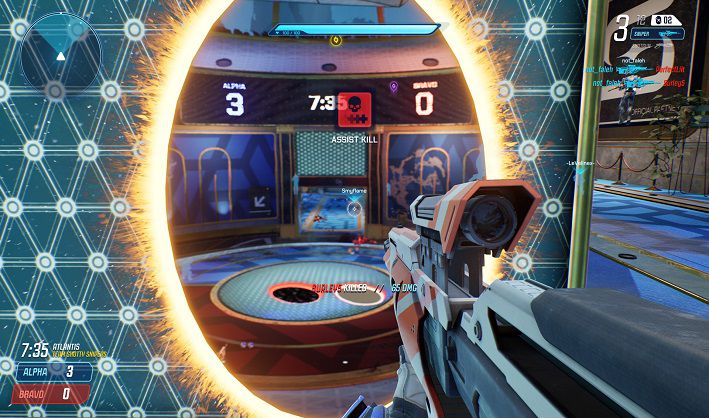
This is where "playing mind games" comes into play. For example, you could fight two guys head-on, but why not retreat into a tight space of walls useful for portals? Creating one portal where you ran from and then another ahead of you will loop you around just in time to snipe them both in the back of the head. Even better, you got the drop on someone else coming up the same way they did, allowing you to backpedal into your portal to get a better vantage point from the other one.
Cleverly, you could also place one near your spawn point and push forward to where the action is. Eventually, you can shoot your remaining portal at the right moment, get out of dodge, and nail some kills from a safe place while peeking inside the hole. Crafting methods of tricking the enemy team is crazy fun because it feels rewarding to make the right call and see it work out.
Gambling And Intuition
In a way, you gamble on the best place to put your portals and let your intuition take over. That random yet conscious decision-making explains further why matches hardly go out of style.
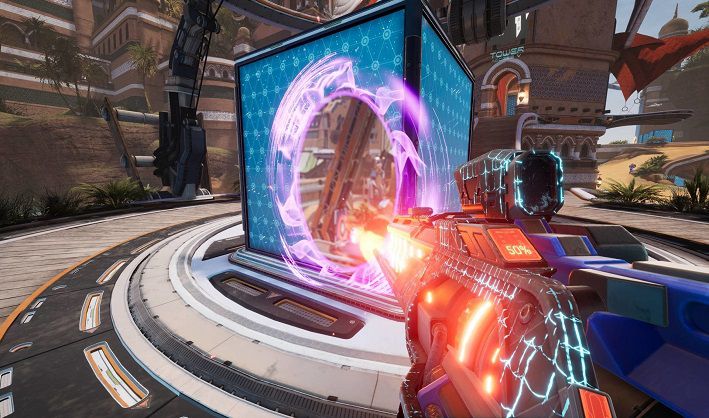
You could pop into the same map from your last match and engage enemy players in a new way because wall portals exist. An enemy player could anticipate the same move you pulled against the previous group of players and kill you constantly. Every match is an ever-changing puzzle of optimizing your portals in the face of new contenders, making PvP in Splitgate a one-of-a-kind experience.
That concludes another week of the Game Design Spotlight! Have you tried Splitgate? Do you think player-controlled mechanics that can make or break a match feels fair? Let us know below! Also, feel free to comment on games you would like me to cover for future stories if you have any suggestions!
Related Articles
About the Author

Anthony Jones is a gaming journalist and late 90s kid in love with retro games and the evolution of modern gaming. He started at Mega Visions as a news reporter covering the latest announcements, rumors, and fan-made projects. FFXIV has his heart in the MMORPGs scene, but he's always excited to analyze and lose hours to ambitious and ambiguous MMOs that gamers follow.
More Stories by Anthony JonesRead Next

Perhaps we should have named this week cozy, chaotic multiplayer…
You May Enjoy

The components are earned by completing a series of Tactical Alerts.

DECA calls the new trial a return to "epic, mechanics-driven boss battles."

Jin calls the attack a "crime" they're taking "very seriously."

The new version will drop ahead of the Xbox launch.
Discussion (0)